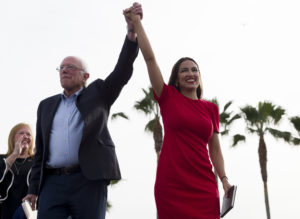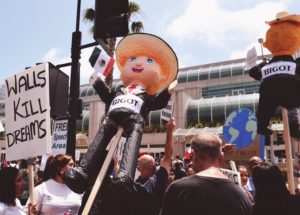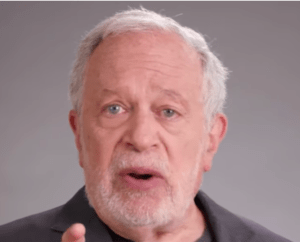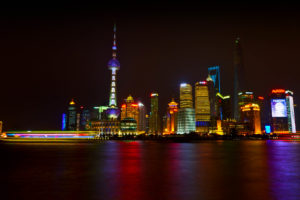Noam Chomsky Looks at How the System Is Rigged to Ensure That Corporations Always Win
The philosopher's new book, "Requiem for the American Dream: The Ten Principles of Concentration of Wealth and Power," is a primer in his analysis of the faults of the American political and economic system. jeanbaptisteparis / CC BY-SA 2.0
jeanbaptisteparis / CC BY-SA 2.0
Noam Chomsky’s new book, “Requiem for the American Dream: The Ten Principles of Concentration of Wealth and Power,” based on the film of the same name, is a primer in Chomsky’s analysis of the faults of the American political and economic system. Taking as its backbone the idea that “a significant part of the American Dream is class mobility: You’re born poor, you work hard, you get rich,” Chomsky systematically documents the many ways the system is rigged from top to bottom to ensure that corporations always win.
As Truthdig columnist Chris Hedges notes in a blurb for the book, “Its power to write its own laws and regulations, Chomsky points out, has ultimately created a mafia economic system and a mafia political system that is exemplified in the rise to power of the demagogue Donald Trump.”
In this book excerpt, we present here Chomsky’s Principle #6: Running the Regulators.
Running the Regulators
If you look over the history of regulation — railroad regulation, financial regulation and so on — you find that, quite commonly, it’s either initiated by the economic concentrations that are being regulated, or it’s supported by them. And the reason is because they know that, sooner or later, they can take over the regulators and essentially run what they do. They can offer what amounts to bribes — offer them jobs or whatever it may be — it’s an advantage to the regulators to accommodate themselves to the will of the powerful. It happens naturally in many ways, and ends up with what’s called “regulatory capture.” The business being regulated is in fact running the regulators. The banks and bank lobbyists are actually writing the laws of financial regulation — it gets to that extreme. That’s been happening through history and, again, it’s a pretty natural tendency when you just look at the distribution of power.
Glass-Steagall
During the Depression, one of the regulations instituted was to separate commercial banks, which are where deposits are federally guaranteed, from investment banks, which just take risks and there are no federal guarantees. They were separated in what was called the Glass-Steagall Act.
In the 1990s, the economic programs of the Clinton administration were run pretty much by Robert Rubin and his associates — people who basically came out of the financial industries — and they wanted to overrule this law from back in the ’30s. They succeeded, in 1999, by undermining Glass-Steagall with the cooperation of right-wing Republicans, Phil Gramm and others. That meant that, essentially, the risky operations of investment banks ended up being guaranteed by the government. Well, you can see where that was going to lead — and it did. At the very same time, they also barred regulation of derivatives — exotic financial instruments — which meant that they could take off unregulated. Now all of this is quite safe as long as you know the government is going to come to your rescue.
Revolving Door
In fact, what Robert Rubin himself did after having achieved this, he went and became a director of Citigroup — one of the biggest banks — and made use of the new laws. He helped them take over a big insurance company and so on — made a lot of money — and it crashed. He went off with all his money, came back as Obama’s chief adviser, and then the government bailed out Citigroup — as they’ve been doing for years, in fact, since the early ’80s. As senators, representatives and advisers in the government leave the government and go into the commercial industrial (by now mostly financial) systems that they’ve been theoretically regulating, it is almost a consequence to have regulatory capture. That’s where their associations are, that’s where they belong. So they move in and out of these systems, and what it means is that there’s the same very close interaction — one aspect of which is the “revolving door.” So you’re a legislator and you become a lobbyist, and as a lobbyist, you want to control legislation.
Lobbying
One of the things that expanded enormously in the 1970s as the business world moved sharply to try to control legislation is lobbying. There was a huge effort with lobbyists to try even to write legislation. The business world was pretty upset by the advances in public welfare in the ’60s, in particular by Richard Nixon — it’s not too well understood, but he was the last New Deal president, and they regarded that as class treachery.
In Nixon’s administration, you get the consumer safety legislation (CPSC), safety and health regulations in the workplace (OSHA) and the EPA — the Environmental Protection Agency. Business didn’t like it, of course — they didn’t like the higher taxes, didn’t like the regulation. And they began a coordinated effort to try to overcome it. Lobbying sharply increased. New think tanks were developed to try to control the ideological system, like the Heritage Foundation. The spending on campaigns went way up — in part, the result of television. And there was just fantastic growth of the role of finance in the economy. With this, deregulation began with a real ferocity.
Deregulation and Financial Crashes
Remember, there were no financial crashes in the ’50s and the ’60s, because the regulatory apparatus of the New Deal was still in place. As it began to be dismantled under business pressure and political pressure, you get more and more crashes, and it goes on right through the years — the ’70s is where deregulation starts, and the ’80s is where crashes really take off.
Take Reagan — instead of letting them pay the cost, Reagan bailed out the banks, like Continental Illinois, the biggest bailout of American history at the time, 1984. In the early 1980s, the US went into the deepest recession since the Great Depression, only to be pulled out by various forms of subsidy, and so on. In 1987, there was another financial crash — well, pretty close, Black Monday. Reagan actually ended his term with a huge financial crisis — the savings and loan crisis — and, again, the government moved in and bailed it out.
Too Big to Jail
The savings and loan crisis was a little different from the 2008 financial crisis, because the perpetrators were brought to court and tried, and a lot was learned from the trials about the chicanery, shenanigans, trickery and crimes that were carried out. Not this last time. Power has become so concentrated that not only are the banks “too big to fail,” but as one economist put it, they are also “too big to jail.” The only kind of criminal investigations that can be undertaken are, for instance, insider trading, where the criminal is actually harming other businesses — that you can do something about. But where they’re just robbing people, that’s done with impunity.
Deregulation went on through the Clinton years. Clinton came along, and there was a tech boom — but by the end of the 1990s there was another bubble that broke, the dot-com bubble. In 1999, regulation separating commercial banks from investment banks was dismantled. Bush came along and we had the housing boom, which, amazingly, the policy economists didn’t notice — or they ignored the fact that there was about an $8 trillion housing bubble that held no relation to the relevant facts about cost of housing. Of course, that broke in 2007, and trillions of dollars of capital just disappeared — fake wealth. That led to the biggest financial crisis since the Great Depression. Then comes the Bush and Obama bailout, which reconstructed the powerful institutions — the perpetrators — and left everyone else floating. There was severe harm to people, who had houses taken away from them, jobs diminished, and so on. That’s where we are now. It was done with impunity, and they’re building up to the next one.
The Nanny State
Each time, the taxpayer is called on to bail out those who created the crisis, increasingly the major financial institutions. In a capitalist economy, you wouldn’t do that. In a capitalist system, that would wipe out the investors who made risky investments. But the rich and powerful, they don’t want a capitalist system. They want to be able to run to the “nanny state” as soon as they’re in trouble, and get bailed out by the taxpayer. They’re given a government insurance policy, which means that no matter how often you risk everything, if you get in trouble, the public will bail you out because you’re too big to fail — and it’s just repeating over and over again.
Their power is so enormous that any attempt to deal with it is essentially beaten back. There have been mild attempts, like the Dodd-Frank regulatory proposal, but that’s whittled down in the implementation by lobbyists — and it doesn’t go after the main issues anyway. And the reasons for this are pretty well understood. There are Nobel laureates in economics who significantly disagree with the course that we’re following — people like Joseph Stiglitz, Paul Krugman and others — and none of them were even approached or consulted. The people picked to fix the crisis were those who created it — the Robert Rubin crowd, the Goldman Sachs crowd. They created the crisis and are now more powerful than before. Is that an accident? Well, not when you pick those people to create an economic plan. I mean, what do you expect to happen?
The last bailout was unprecedented in scale. These corporations were kept viable in a period where, in a capitalist economy, they would’ve crashed. But we don’t have a capitalist economy — business wouldn’t accept that, and they have enough power to prevent it — so, therefore, the public comes in to pour literally trillions of dollars into the hands of failing corporations and maintain them. And that’s true in all sorts of ways. There’s one major technical study of bailouts over several years that concludes that probably 25 percent — a study of the hundred biggest corporations on the Fortune list by two well-known economists — 25 percent of them survived thanks to public subsidy at some point, and most of the rest gained from it. So while this is unprecedented in scale, there’s nothing new about it. The same is true after all financial crises.
Externalities and Systemic Risk
The financial system is close to a market system — it does approximate a market, unlike the production system, which has enormous state dynamism and intervention to keep it going — and in a market system there are well-known inherent problems, namely the participants in a transaction try to take care of only themselves. They don’t pay attention to the effect on others. Let’s say you sell me a car. You’ll try to make a profit, I’ll try to get a decent car, but we’re not considering the impact on others: environmental problems, congestion, rising price of fuels and so on. Those may be individually small, but they mount up. Those are called “externalities” in economic terminology.
Now, in the case of a big investment bank like Goldman Sachs, if they make an investment or a loan, they try to calculate in the risk to themselves — of course, that’s pretty easy to do when they know they’re going to be bailed out because they’re too big to fail. What they don’t take into account is what’s called “systemic risk.” The risk that if their investments collapse, the whole system may collapse. Well, that’s what happened, has repeatedly happened, and is probably going to happen again. And that’s been exacerbated by the deregulatory mania and also by the development of very complex financial instruments, which, again, have no known contribution to the economy, but make it possible to distribute risks in complex ways.
That’s what happened with the mortgage crisis. Mortgage sellers were offering subprime mortgages to people who they knew would never be able to pay them back, and the banks were picking them up as mortgage-backed securities (MBSes). But they didn’t have to worry, because they did what’s called “securitizing” — they broke them up into many small parts and handed them off to someone else as collateralized debt obligations (CDOs). Now, those investors often didn’t even know what they were buying and, meanwhile, the instruments that allowed the buying were essentially the insurance against the failure of what you’re doing. Technically that was supposed to reduce risk. What it in fact did was magnify risk in such a way that when the system suffered a break — as it did with the collapse of the housing crisis — then the effects were enormous. And again, the taxpayers were called in to bail it out. That’s not just bailing out the banks, that’s hundreds of billions of dollars coming out of the Fed and Treasury, providing cheap credit and so on.
There’s nothing surprising about this — it’s exactly the dynamics you expect. If the population allows it to proceed, it’s just going to go on and on like this. Until the next crash — which is so much expected that credit agencies, which evaluate the status of firms, are now counting into their calculations the taxpayer bailout that they expect to come after the next crash. This means that the beneficiaries of these credit ratings, like the big banks, can borrow money more cheaply, they can push out smaller competitors, and you get more and more concentration.
Everywhere you look, policies are designed this way, which should come as absolutely no surprise to anyone. That’s what happens when you put power into the hands of a narrow sector of wealth, which is dedicated to increasing power for itself — just as you’d expect.
Let the Market Prevail
The simplest definition of “neoliberalism” is “let the market run everything.” Get the government out of policy formation except to support market activities. Nobody really means that. Those are measures applied to the poor and the weak but not to yourself. And that runs all through modern economic history back to the 17th century. They didn’t call it neoliberalism then.
Take Adam Smith’s recommendations to the newly liberated colonies. He was the great economist of the day, and he gave the colonies advice — which is essentially what the World Bank and IMF tell poor countries today, and the poor in the United States too. He said that the colonies should concentrate on what they’re good at — that was later called “comparative advantage” — export primary products, like agricultural products, fish and fur, and import superior British goods. Furthermore, don’t try to monopolize your resources. The main resource in those days was cotton. That was like the fuel of the early Industrial Revolution. He pointed out to the colonies that that would improve the total economic product, and so on.
Of course, the colonies were liberated, so they were free to completely ignore “sound economics” as it was called. They imposed high tariffs to block superior British goods — at first textiles, later steel and so on — and therefore were able to develop domestic industry. They tried very hard and, in fact, almost succeeded in monopolizing cotton — that was a large part of the point of the conquest of Texas and half of Mexico. The reasons were very explicit — the Jacksonian presidents said if we can monopolize cotton, we can bring Britain to their knees. They won’t be able to survive if we control the main import that they need. So, without going further into the details, the colonies did exactly the opposite of the neoliberal prescriptions (which, incidentally, Britain had also done as it developed). Meanwhile the poor and oppressed, they had these principles rammed down their throats. So India, Egypt, Ireland and others, they were deindustrialized, deteriorated — something that continues even now.
And that’s happening right in front of our eyes. Take inside the United States — for the large majority of the population, the principle is you’ve got to “let the market prevail.” Cut back entitlements, cut back or destroy Social Security, cut back or reduce the limited health care — just let the market run everything. But not for the rich. For the rich, the state is a powerful state, which is ready to move in as soon as you get into trouble and bail you out. Take Reagan, he’s the icon of neoliberalism, free markets and so on. He was the most protectionist president in postwar American history. He doubled protectionist barriers to try to protect incompetent US management from superior Japanese production. Again, he bailed out banks instead of letting them pay the costs. In fact, government actually grew during the Reagan years relative to the economy, and that’s the icon of neoliberalism. I should add that his “Star Wars” program, SDI, was advertised openly to the business world as a government stimulus, a kind of cash cow that they could milk. But that was for the rich — meanwhile, for the poor, let market principles prevail, don’t expect any help from the government, the government is the problem, not the solution and so on. That’s essentially neoliberalism. It has this dual character, which goes right back in economic history. One set of rules for the rich. Opposite set of rules for the poor.
Your support matters…Independent journalism is under threat and overshadowed by heavily funded mainstream media.
You can help level the playing field. Become a member.
Your tax-deductible contribution keeps us digging beneath the headlines to give you thought-provoking, investigative reporting and analysis that unearths what's really happening- without compromise.
Give today to support our courageous, independent journalists.






You need to be a supporter to comment.
There are currently no responses to this article.
Be the first to respond.